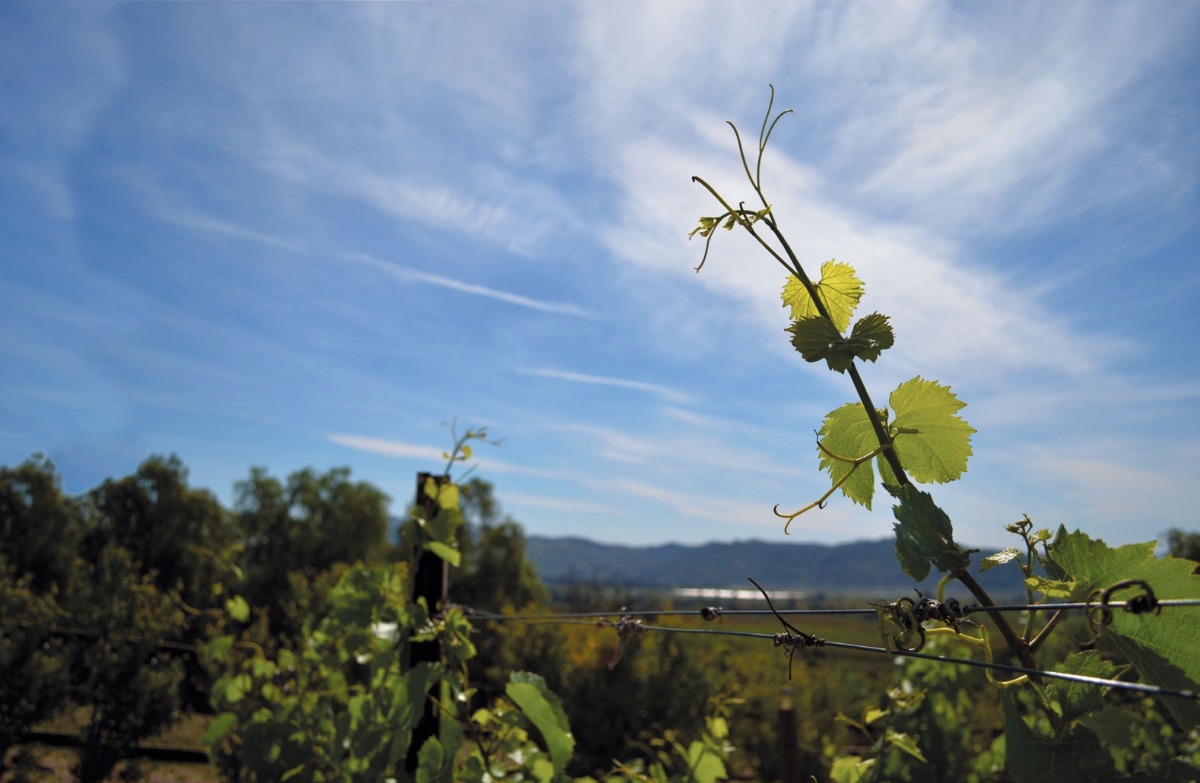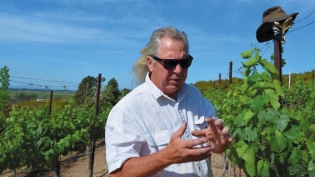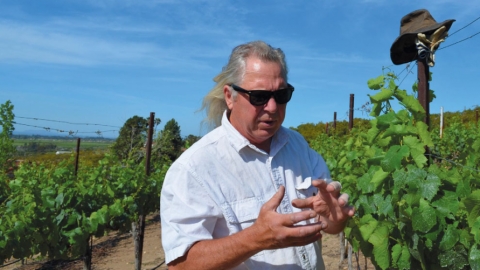The Next Napa?
Ventura County is known for many things. Growing wine grapes is not one of them – yet
In 2013, an estimated 570,000 acres of wine grapes dotted the California landscape, according to the USDA National Agricultural Statistics Service. Of those, about 37 acres were in Ventura County, up from 31 acres the previous year, and most were red-wine grapes. Since the reporting is voluntary, the numbers aren't ironclad. Still, the county's not even a sip in the state's wine decanter.
"Ventura County is not a wine growing region – as of yet," says Karen Stewart, proprietor of Four Brix Winery in Ventura, which is leasing four and a half acres in an Ojai vineyard.
The county does boast at least 33 vineyards, says Rudy Martel, Ventura County chief deputy agricultural commissioner. The number represents all vineyards with permits for conventional or organic pesticide use. There could be additional vineyards that are not on the ag commission's radar because they don't use pesticides, notes Martel.
Ojai and Camarillo have the most vineyards, with seven each, and Santa Paula is next with five. There are also vineyards in Moorpark, Fillmore, Ventura, Westlake Village, Thousand Oaks, Newbury Park, Saticoy, Simi Valley and the Santa Rosa Valley.
Judging from the permits, the vineyards are small, like Mark Dufau's Ojai Ridge, which produces wines from the roughly five acres of Cabernet and Syrah vines located on his family ranch. Some are downright tiny, like the 200-vine pocket vineyard (AKA "research vineyard") of Syrah and Grenache that Marlow and Janis Barger, owners of Plan B Wine Cellars in Ventura, have at their Camarillo home.
"We harvested a few varietals from Cani Amante Vineyard [in Ojai] in 2013 and more will be available from this year's harvest and future harvests as the vines mature," Stewart says. "The winery is bottling Riesling in June of this year and in 2015 we will bottle Montepulciano with Sangiovese and a Bordeaux-style blend of Cabernet Sauvignon, Cabernet Franc, Merlot and Petit Verdot."
Combine this with the locally sourced grapes Bruce Freeman is using for his line of Clos des Amis wines (see next page), and it's beginning to sound like Ventura County could become a wine-grape growing region.
GRAPE NEWS
What Ventura County has going for it is plenty of warm weather combined with east-west valleys – like the Santa Clara River Valley – that allow cold air to blow in from the ocean, and there is a lot of variety in the soil and minerals, says Freeman, who has high hopes for this area. (Pinot Noir and Chardonnay grapes like these conditions.)
Freeman also sources grapes from Ojai, which reminds him of the Corbières, a wine appellation in Southwestern France, similar in its topography and terrain.
"Mountains, valleys, small roads and villages, but it is in a sea of vineyards – grapevines everywhere; it's what Ojai should look like!"
Viticulturist Jeff Newton, founder of Coastal Vineyard Care Associates in Buellton, consulted on a 1991 project where his partner, Larry Finkle, planted the Roll Ranch in the Upper Ojai Valley. "We planted Syrah and Viognier, which both have done very well over time and made very good wines for Adam Tolmach at The Ojai Vineyard," he says.
NOT SO GRAPE NEWS
Wine grapes are often grown on ground that's not good for other crops, says William Amspacher, PhD, a Cal Poly San Luis Obispo professor who specializes in quantitative analysis of California's wine and wine grape industry. With Ventura County's rich soil, farmers here can grow crops with a higher return per acre than wine grapes, he explains.
Winemaking is speculative in nature, so the area's high cost of land and labor create more risk than other agricultural crops, adds Freeman. Plus, it takes three to five years before the first harvest, and an additional year before bottling.
Another issue is the sharpshooter, note Freeman, Martel and Newton.
"The big problem in Ventura County is Pierce's Disease, a bacteria vectored by the green, blue-green and glassy-winged sharpshooters," Newton explains. "These critters are all very prevalent in Ventura County and have caused the death of many vineyards planted there. There are now pesticides that will deal with them, but Pierce's Disease continues to be a problem," he says.
In addition to these challenges, are wineries' established relationships with their existing sources and producing enough grapes to fill potential demand.
Plan B, for example, sources a majority of its grapes from Santa Barbara County, with some coming from Paso Robles. While Marlow Barger says they "never say never," there are no current plans to make wine from Ventura County grapes: "We strongly believe that in order to make the best wine possible, you have to start with the best grapes. At least for now, we are happy with the vineyards we have been working with for several years."
If the county's tenacious growers decide to move ahead and plant more wine grapes, the good news is that they aren't as thirsty as some popular crops grown here, says Amspacher.
Stay tuned.







